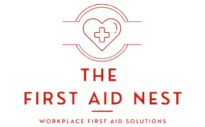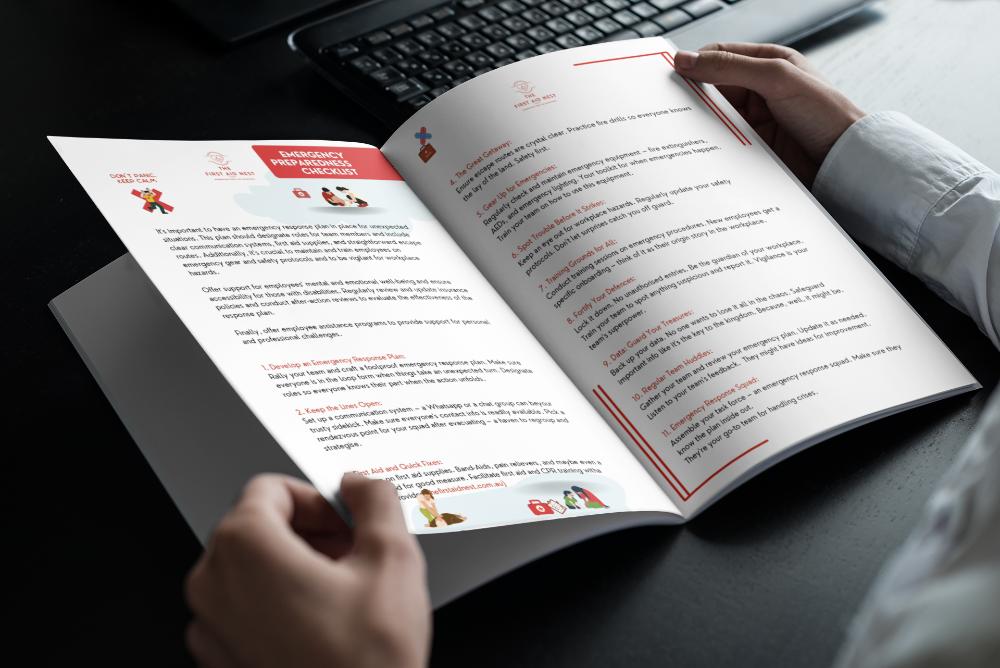Safely Satisfying Little Taste Buds: Allergy-Free Baby and Toddler Meals & Mealtime Tips

Understanding food allergies in infants and young children is more important than ever in the modern, changing food environment.
In order to give our children the best care possible, parents and other adults who are responsible for them must make sure their meals are both nourishing and secure. Food allergies among children have noticeably increased in recent years, so it is crucial for parents to be informed and watchful.
Protecting our children’s health and wellbeing may depend on our ability to identify common allergens and spot early indications of an allergic reaction.
Recognising Baby and Toddler Food Allergies
Food reactions in babies and toddlers can often be a source of worry for parents. Distinguishing between genuine food allergies and food intolerances is vital, as the two have different implications and management strategies. While food allergies involve the immune system and can lead to severe reactions, food intolerances, though uncomfortable, are generally less severe. Recognising the symptoms specific to food allergies can empower parents to respond promptly, ensuring the safety and well-being of their little ones.

- Symptoms of food allergies: These can range from mild reactions like hives, a stuffy nose, or a mild rash to severe symptoms like difficulty breathing, swelling of the lips or face, and even anaphylaxis.
- Frequency and immediacy: Allergic reactions usually occur soon after the consumption of an allergenic food, often within minutes to a couple of hours.
- Food intolerances: These don’t involve the immune system. Symptoms are often digestive in nature, such as gas, bloating, or diarrhea, and might take longer to manifest.
- Importance of consultation: If any adverse food reactions are observed, it’s crucial to consult a pediatrician or allergist for accurate diagnosis and guidance.
Common Allergens to Watch Out For
As we strive to provide a diverse and nutritious diet for our young ones, it’s imperative to be aware of certain foods that are more likely to trigger allergic reactions.
Central to this list is the “Big 9” – a group of foods that account for the majority of food allergies in children and adults alike.
While these are the usual suspects, it’s worth noting that allergies can be as unique as the individual, and there are other less common allergens that can also pose risks, necessitating a vigilant and informed approach to feeding our children.

Primary allergens include:
- The “Big 8” allergens:
- Milk: Often found in various dairy products and some baked goods.
- Eggs: Common in many foods, including baked items and certain sauces.
- Peanuts: Distinct from tree nuts, found in a variety of foods and often in candies, baked goods, and sauces.
- Tree nuts: Includes almonds, cashews, and walnuts, among others.
- Soy: Found in soy milk, tofu, and various processed foods.
- Wheat: A prevalent ingredient in bread, pasta, cereals, and more.
- Fish: Especially types like salmon, tuna, and cod.
- Shellfish: Includes shrimp, crab, and lobster.
- Sesame: The most common seed allergy
- Less common but noteworthy allergens:
- Seeds: Especially sunflower, and poppy seeds.
- Certain fruits: Such as strawberries, citrus, or kiwi.
- Spices: Like mustard, garlic, or coriander.
Preparing Allergy-Free Meals

Ensuring that meals are allergy-free goes beyond merely avoiding certain ingredients. It’s a holistic approach that encompasses sourcing, preparation, and even serving. Cross-contamination, where allergens from one food inadvertently find their way into another, can be a hidden danger. However, with knowledge of alternative ingredients and a repertoire of allergy-free recipes, parents can confidently create delicious and nutritious meals that cater to their child’s dietary needs without compromising on taste or nutrition.
Key considerations in preparing allergy-free meals include:
- Safe cooking practices:
- Cleanliness: Always ensure kitchen surfaces, utensils, and hands are cleaned thoroughly before cooking.
- Separation: Designate separate cookware and utensils for allergy-free cooking, and if possible, prepare allergy-free meals before any others.
- Label reading: Always check food labels for potential allergens or traces of them, even if you’ve bought the product before, as ingredients can change.
- Alternative ingredients:
- Dairy substitutes: Options like almond milk, coconut milk, or oat milk can replace cow’s milk in many recipes.
- Gluten-free grains: Quinoa, rice, and gluten-free oats are great alternatives to wheat-based products.
- Egg replacements: For baking, apple sauce, mashed bananas, or commercial egg replacers can be used.
- Nut alternatives: Seeds like sunflower or chia can offer similar crunch and nutrition without the allergen risk.
- Allergy-free meal ideas and recipes:
- Breakfast: Gluten-free oat porridge with berry compote and coconut yogurt.
- Lunch: Rice and vegetable stir-fry using tamari sauce instead of soy.
- Dinner: Allergy-friendly lentil soup with gluten-free bread.
- Snacks: Rice cakes with avocado or homemade fruit popsicles.
Embracing an allergy-free meal plan for babies and toddlers doesn’t mean sacrificing flavor or variety. With a little creativity and vigilance, every mealtime can be a delightful, safe, and nutritious experience.
Mealtime Tips for Allergy-Free Feeding

The process of feeding babies and toddlers, especially those with allergies, often goes beyond just the act of eating. It’s a delicate balance of exploration, observation, and engagement. Parents must be meticulous in introducing new foods and vigilant in monitoring reactions, ensuring that their child’s journey into the world of flavors is both safe and enjoyable. With structured strategies and a touch of creativity, mealtimes can transform from moments of caution to delightful experiences of discovery.
Key strategies for allergy-free mealtimes include:
- Introducing one new food at a time:
- Pacing: Offer new foods every 3-5 days, allowing ample time to observe potential reactions.
- Observation: Watch out for signs like hives, digestive upset, or respiratory issues which could indicate an allergic reaction.
- Diversity: Rotate a variety of foods within the child’s safe list to ensure balanced nutrition.
- Keeping a food diary for your baby or toddler:
- Record keeping: Jot down every food introduced, the date, and any reactions observed.
- Pattern identification: Over time, this log can help pinpoint specific foods or ingredients causing issues, making it easier to address concerns with healthcare professionals.
- Growth and preferences: The diary can also track your child’s developing preferences and growth, offering insights into their evolving nutritional needs.
- Engaging toddlers in meal prep:
- Educational: Teach them about safe ingredients and the importance of avoiding allergens.
- Skills development: Simple tasks like washing vegetables or stirring can enhance motor skills.
- Boosting enthusiasm: When toddlers have a hand in making their meal, they often become more eager to taste and enjoy their creations, fostering a love for diverse, allergy-safe foods.
When to Consult a Pediatrician or Allergist
While parents play an indispensable role in monitoring and managing their child’s food intake, the guidance of healthcare professionals remains paramount, especially when it comes to allergies. Pediatricians and allergists offer specialized insights and tools to accurately identify, understand, and manage food allergies. Ensuring regular consultations and seeking their expertise when introducing new foods can be instrumental in navigating the complex landscape of food allergies, safeguarding the child’s health at every step.

- Importance of regular check-ups and allergy tests:
- Baseline evaluations: Regular check-ups provide a consistent health benchmark, ensuring that any deviations are promptly identified.
- Specific testing: Allergy tests, whether blood tests or skin prick tests, offer concrete data on specific allergens, helping tailor dietary choices accurately.
- Progress tracking: Continuous monitoring can detect changes in allergy severity, sometimes even leading to the resolution of certain allergies.
- Seeking professional advice when introducing potentially allergenic foods:
- Guided introductions: Having a controlled environment when introducing potential allergens, like peanuts or shellfish, can ensure immediate intervention if adverse reactions occur.
- Customised plans: Every child is unique, and professionals can offer tailored strategies for food introductions based on a child’s history and risk factors.
- Education and resources: Professionals provide invaluable guidance on reading labels, understanding cross-reactivity, and accessing resources like allergy-friendly recipes and community support.
By actively collaborating with pediatricians or allergists, parents can arm themselves with the knowledge and tools needed to confidently and safely guide their child through their dietary journey.
Want more? We’ve got you covered…
Our Baby First Aid Courses
Our baby first aid courses are available in person in your home and online. We run classes in your home with groups of 2, 4 or up to 10 in Sydney & Melbourne and you can book in 3 easy steps!
- Pick your class
- Follow the prompts to purchase
- We will contact you within 24 hours to lock in your date of choice
Our First Aid Certificate Courses
We run most of the popular first aid courses Australia wide. HLTAID011 Provide First Aid, HLTAID009 Provide CPR, HLTAID012 Provide First Aid in an Education & Care Setting, RAMOAP (anaphylaxis), Mental Health first aid and CPR/LVR to name a few.
Book your public spot online or contact us if you have a group of 5+ people for onsite training.
Here are some other resources you may enjoy!
FREE GUIDE: Your Virtual Baby First Aid Kit
FREE GUIDE: Introducing Common Allergy Foods & Allergic Reactions
FREE Workplace Emergency Preparedness Plan: Grab this at the bottom of every page!
Follow for baby & child first aid and allergy info and tips on Instagram, TikTok & Facebook all @thenestcpr

